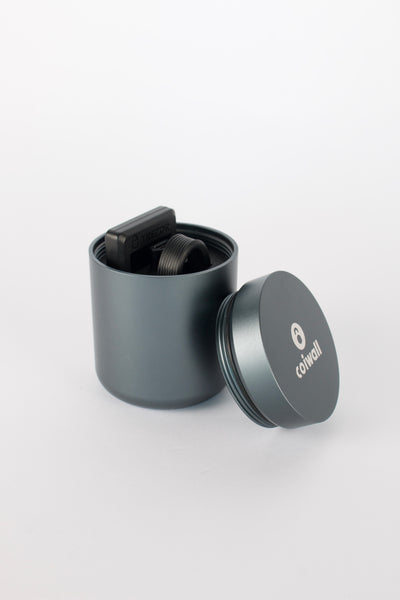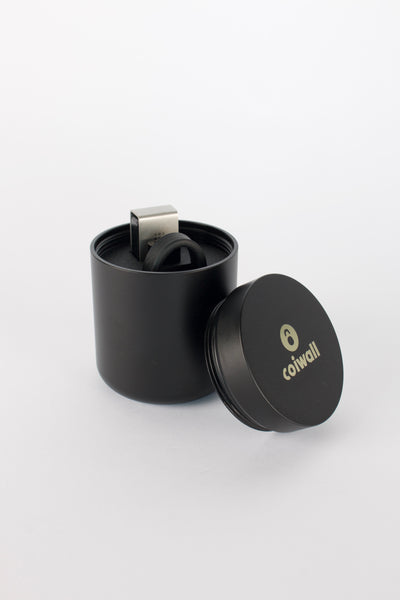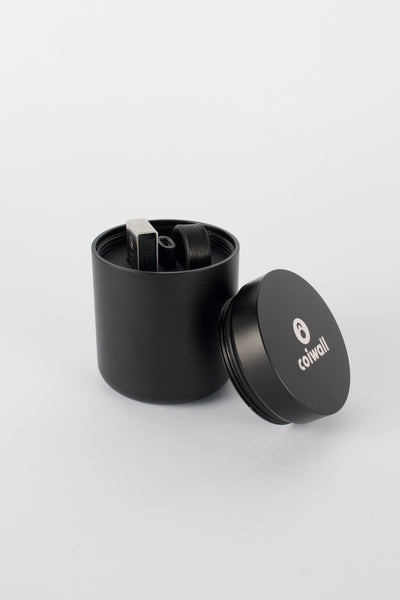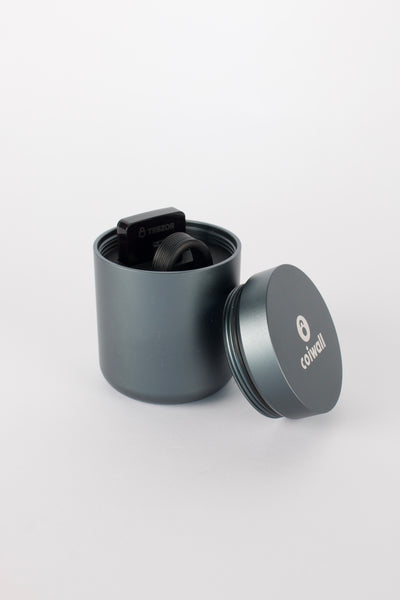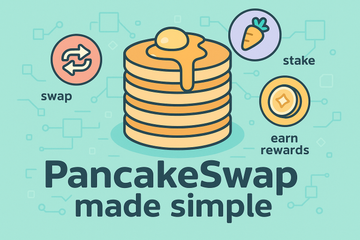If you have ever swapped tokens on a weekend while sipping coffee, there is a good chance you have brushed past PancakeSwap. It is the playful, food-themed decentralized exchange that took root on BNB Chain and grew fast. The vibe is casual, the features run deep, and the fees tend to be friendly. Still, the real story sits under the surface. How does it all work, and how do you use it without getting tripped up by slippage, fees, or risky pools? Let’s unpack it in plain English, with a few honest notes from the trenches.
So, what exactly is PancakeSwap?
PancakeSwap is an automated market maker, or AMM. Instead of classic order books with buyers and sellers at specific prices, you trade against liquidity pools. Each pool holds two tokens. The price shifts with supply and demand, and a simple formula manages the curve. That is why swaps clear quickly, even when the market looks jittery.
It started on BNB Chain, which means you pay gas in BNB and enjoy fast finality with low costs. Over time, PancakeSwap expanded to several chains, and you can pick networks inside the app. The goal is simple. Make token swaps, liquidity, and yield feel like everyday actions, not a PhD project.
How swaps, pools, and LP tokens tie together
Here is the thing. When you add liquidity to a pair, say BNB and USDT, you deposit equal value in both. In return, you receive LP tokens. Those LP tokens prove your share of the pool and entitle you to a slice of trading fees. When you remove liquidity, you burn the LP tokens and get your assets back, plus earned fees.
There is a catch that spooks newcomers. Impermanent loss. If the price of one asset runs far relative to the other, the pool balances change. You still hold value, but compared to simply holding the tokens outside the pool, your outcome might be lower. The loss is “impermanent” because price can revert, fees can offset it, and long-term liquidity can still work. Yet it is a real risk. Know it, track it, respect it.
About those fees
PancakeSwap uses fee tiers, especially on newer versions that concentrate liquidity. You will see options like 0.01 percent, 0.05 percent, 0.25 percent, or even 1 percent, depending on the pair and its volatility. Lower fees suit very stable pairs. Higher tiers make sense for wild tokens. You can check the suggested tier in the interface, which saves time and second-guessing.
CAKE, syrup, and the sweet stuff
CAKE powers the PancakeSwap ecosystem. You will see it used for staking in Syrup Pools, for voting on proposals, and for general incentives across farms. Rewards change with market cycles, and emissions adjust over time. The team often tweaks token economics to keep things sustainable. If you stake CAKE, read the pool details. Some pools pay in CAKE, others distribute partner tokens, and some run for a set period.
One more note. Rewards in crypto can look juicy on day one, then cool down as more users pile in. That is normal. Treat APR as a snapshot, not a promise.
Getting started without getting lost
You do not need a complicated setup to trade on PancakeSwap. A wallet, a little gas, and a small plan will carry you.
- Choose a wallet. MetaMask, Trust Wallet, and many others work. If you prefer cold storage, pair a Ledger or Trezor with MetaMask or WalletConnect. Your keys stay offline, yet you can still sign swaps.
- Fund your address. On BNB Chain, top up a bit of BNB for gas. Keep a small buffer, since approvals and swaps both cost gas.
- Connect and check the network. Inside PancakeSwap, pick the right chain. The wrong network means stuck approvals or a missing balance, which is annoying.
- Approve, then swap. The first time you trade a token, you sign an approval. After that, the swap goes through with fewer clicks.
One practical tip. Keep slippage tight unless the token is thin and jumpy. If a coin is volatile, start with a smaller trade. You can always scale your size once you see the route and expected output.
The new flavor, concentrated liquidity
Concentrated liquidity changed the game for LPs. Instead of spreading your funds across the entire price range, you choose a specific band, which increases capital efficiency. More of your money sits where trades happen, so your fee share can rise. The tradeoff is upkeep. If price moves out of your chosen range, your liquidity goes inactive until you rebalance.
For many users, simple pools still hit the spot. For power users, concentrated liquidity is worth the effort. It is like choosing between a set-and-forget savings jar and a garden that needs a bit of pruning.
Farms, yields, and keeping a cool head
Yield farming sounds like free brunch, but it is more like running a food truck. You manage inventory, traffic, and weather. On PancakeSwap, you can stake LP tokens in farms and earn additional rewards. Some farms boost with CAKE, others feature partner projects. Read the details, and take the APR with healthy skepticism.
- Watch deposit fees. Many pools are fee free, but some partner pools may charge a small entry fee.
- Check emissions. Rewards can decay over time. A high APR can fade as more liquidity arrives.
- Mind impermanent loss. Stable pairs tend to be calmer. Volatile pairs can pay more, but the swings cut both ways.
You know what? It is okay to keep things simple. Start small, track results, and only ramp up when you understand your risk.
Security talk without the scare tactics
DEX freedom feels good, yet you still need guardrails. Here is a short list that pays for itself.
- Use a hardware wallet. A Ledger or Trezor connected through MetaMask or WalletConnect keeps private keys off your computer. That reduces the blast radius of malware or bad clicks.
- Double check the URL. Bookmark the official site. Fake sites are crafty, and they often look perfect until it is too late.
- Verify token contracts. Search the contract address on BscScan or the project’s official channels. A small check avoids a lot of pain.
- Review allowances. Revoke unlimited approvals you no longer need. Tools like revoke.cash help. Less exposure, fewer surprises.
- Keep slippage low. Sandwiched trades feel awful. Tight slippage leaves less room for bad routes.
Honestly, security is not glamorous. But it keeps your coins where they belong, and that is the real flex.
Beyond swaps, a few extras worth knowing
PancakeSwap offers more than a simple swap box. You may see limit orders, trading rewards, position managers that simplify concentrated liquidity, lottery tickets, prediction markets, and even partner integrations for perpetuals. Some features are seasonally popular. Others feel like hidden gems for niche users.
None of this is advice. It is a menu. Think of your goals, then pick what serves them. If you are here to trade stable to stable, keep it lean. If you want to learn LP strategy, set aside a small experiment wallet and take notes like a lab nerd.
Cross chain routes and the practical bits
Fees and liquidity pockets differ across networks. PancakeSwap tries to smooth this with routing tools and multi network support. In quiet markets, this feels seamless. In a rush, some routes can get quirky. If a swap looks off, try a smaller size, a different route, or a different time of day. Liquidity is a living thing. It breathes.
If you use a hardware wallet, a quick tip helps. On Ledger, enable blind signing for certain dapps. On Trezor, confirm the full details on screen. The flow slows you down, but that is the point. Slow is smooth, smooth is fast.
Common pitfalls traders whisper about
Everyone learns a few lessons the hard way. You do not have to.
- Forgetting gas. A wallet with zero BNB is a stranded boat. Keep a little buffer.
- Over trusting screenshots. APRs, pools, and incentives change. Check the live app, not a tweet from last week.
- Chasing every farm. Rotation is fine, chaos is not. Track your cost of moving around.
- Ignoring tax implications. Swaps and yields can be taxable where you live. Keep records. Future you will be grateful.
A quick mental model that just works
Think of PancakeSwap like a busy street market. Stalls equal pools. Prices shift as crowds move. If you want a simple snack, you buy and go. If you run a stall, you manage stock, price, and foot traffic. Both roles can make sense, but they feel different. Choose your role with clear eyes.
Putting it all together
PancakeSwap shines because it blends speed, low costs, and plenty of choice. The swaps are simple. The pools can be as advanced as you want. CAKE ties the community and incentives together. Add a hardware wallet like Ledger or Trezor, and you have a sturdy stack for day to day trading or longer yield plays.
Markets will swing. Liquidity will ebb and flow. Features will keep shipping. If you keep your setup clean, your risk sized, and your expectations grounded, PancakeSwap becomes a handy part of your crypto toolkit. No fuss, no drama, just a good plate of swaps and syrup when you need it.
One last note. Start with small amounts. Practice on a quiet day. Take a breath before you click confirm. It sounds basic, and it is. Sometimes the simple habits do the heavy lifting.

